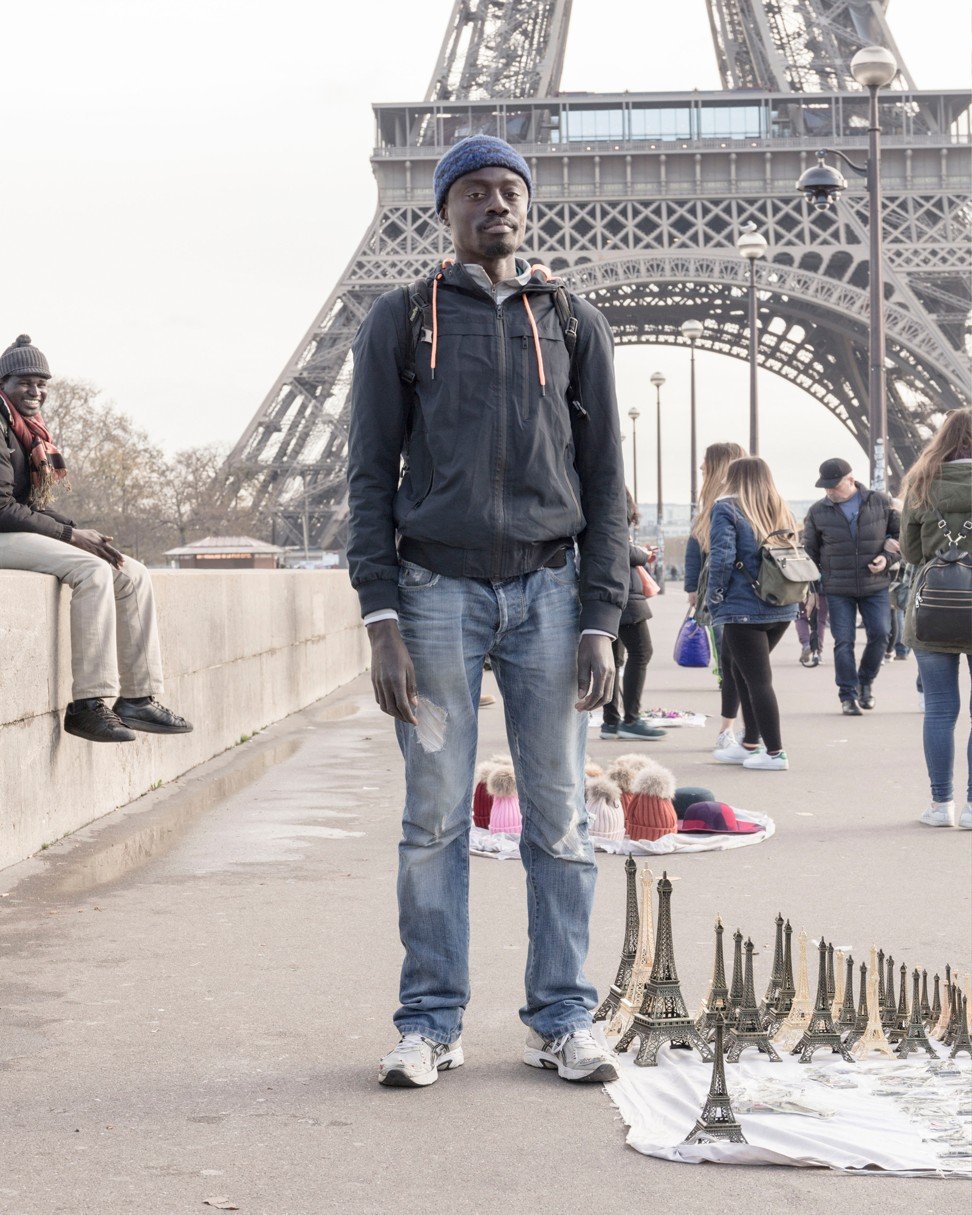
How China’s fake Paris impressed a French photographer with the Eiffel Tower and more
When Parisian photographer Francois Prost visited the Hangzhou neighbourhood of Tianducheng he was fascinated by the duplication of his home city. His images in an exhibition in Paris show there’s much more to the Chinese city than an Eiffel Tower replica
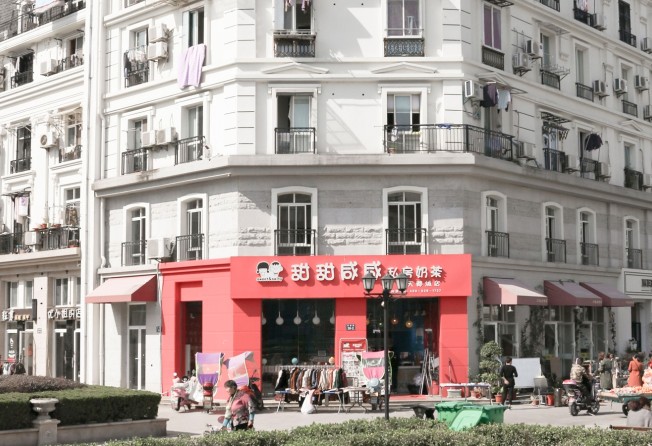
When Parisian graphic designer and photographer Francois Prost headed to the Hangzhou neighbourhood of Tianducheng in China’s eastern province of Zhejiang last November, he booked accommodation with a view of the Eiffel Tower.
“It was quite a convincing sight,” he says, “other than the fact that it is smaller than the actual Eiffel Tower – three times smaller – but still very impressive.”

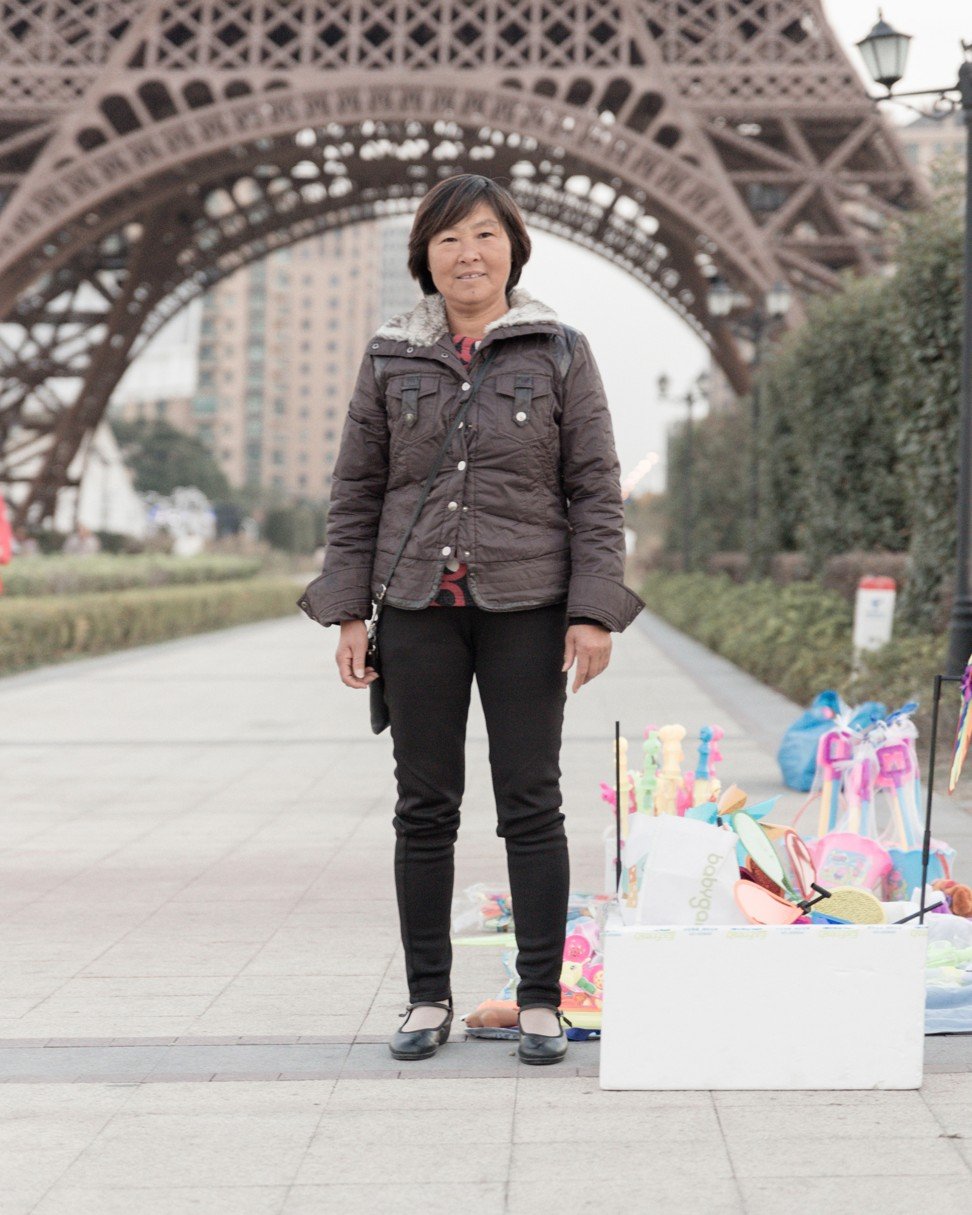
The weird and wonderful, surreal nature of the creation is what attracted Prost to China in the first place, to see his home city constructed overseas on a grand scale in the suburbs of Hangzhou, in the eastern province of Zhejiang.
He knew before leaving that he wanted to capture details of Tianducheng – meaning Sky City – in photos, then compare them up close to the real thing.
“I just found the whole idea of duplication so compelling and fascinating. Tianducheng is immense,” he says.
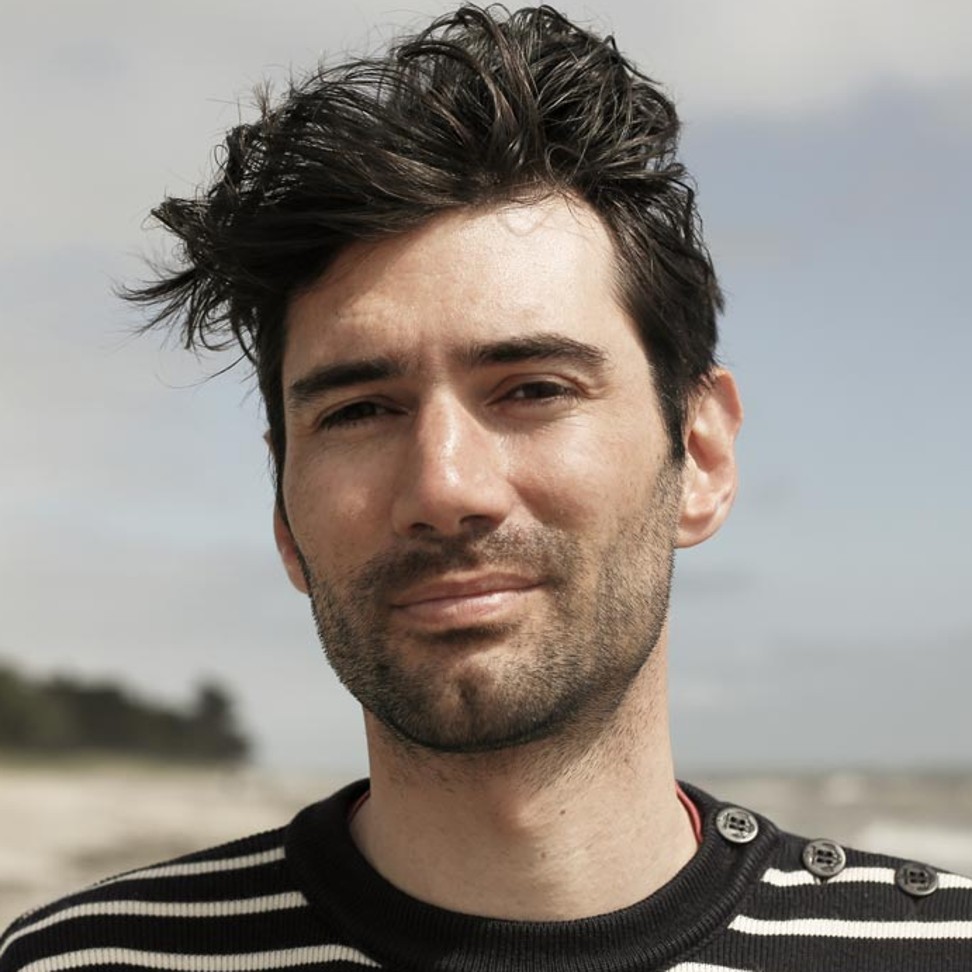
The now 31 square kilometre Parisian clone got off the ground in 2007 and has been growing in size and population since.
“It’s a living city, a far cry from a Las Vegas facsimile style world, where everything would be chocolate-box French
Prost says he researched his subject thoroughly.
“I spent a week taking loads and loads of photos, of everything that seemed familiar to me [in Tianducheng]. Then on my return [to Paris] I made catalogues, with different perspectives, to classify and arrange a maximum number of individual clichés of Paris – icons such as the Eiffel Tower, the street lamps, the statues, details and ornaments – versus the replicas.”
Prost’s “Paris Syndrôme” exhibition is now running at the Superette, a film production house and gallery in the 10th arrondissement, a creative hub on Paris’ Right Bank, until mid-November.
Prost says his aim through the exhibition is to “explore the funny and disturbing similarities” between the City of Light and its Chinese counterpart.
The photos focus on three main elements of the Chinese neighbourhood: the Eiffel Tower, built on a 50-metre-wide roundabout; the Haussmannian buildings; and the big park, a mix of inspiration from the Jardin des Tuileries and the Chateau de Versailles, he says. (Haussmannian is a reference to Baron Haussmann, who designed the broad boulevards lined with lookalike apartment buildings that transformed Paris in the mid-19th century.)
As is the case with Versailles, Prost says: “Lots of young married couples go to the garden to be photographed – it’s a real attraction.”
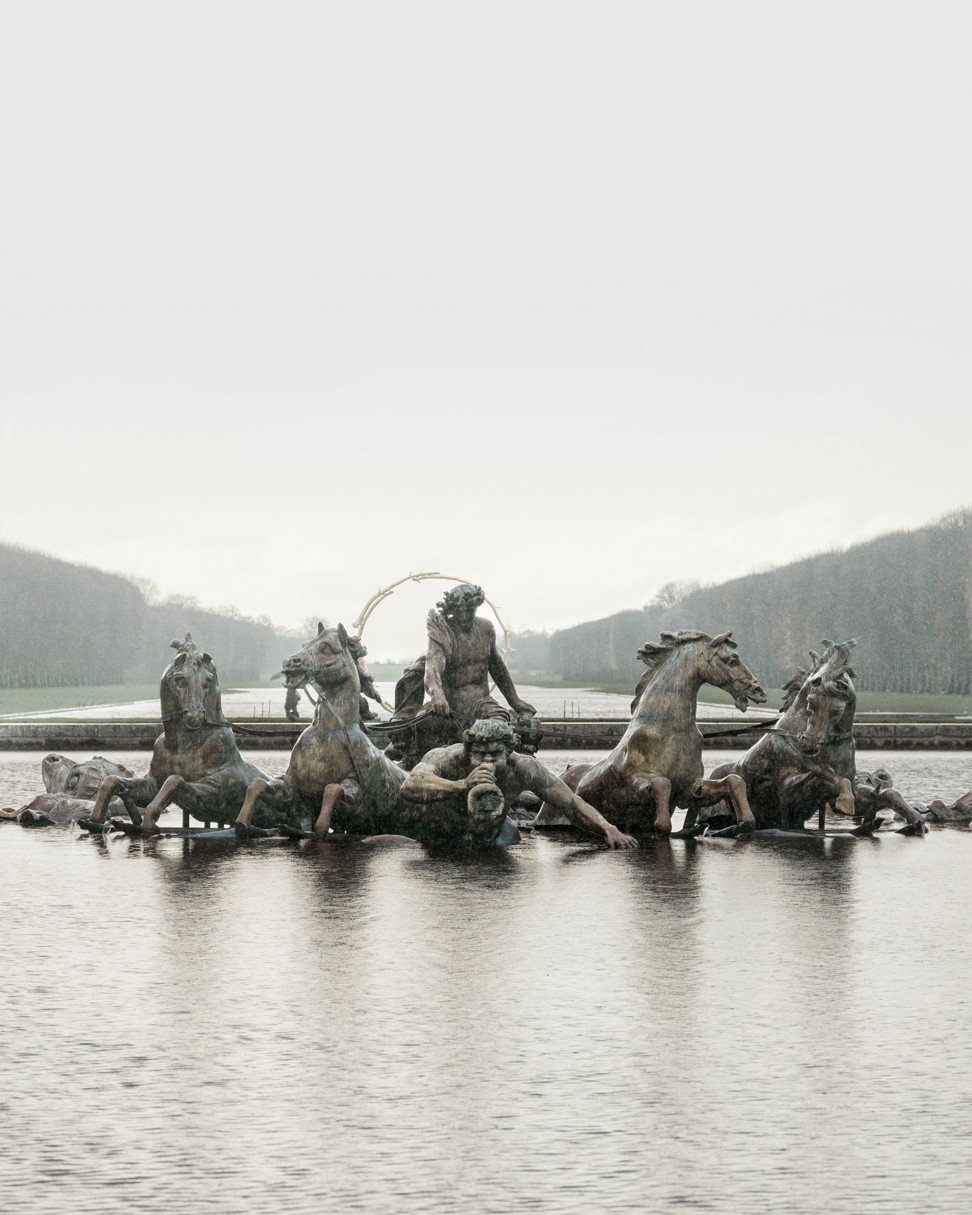
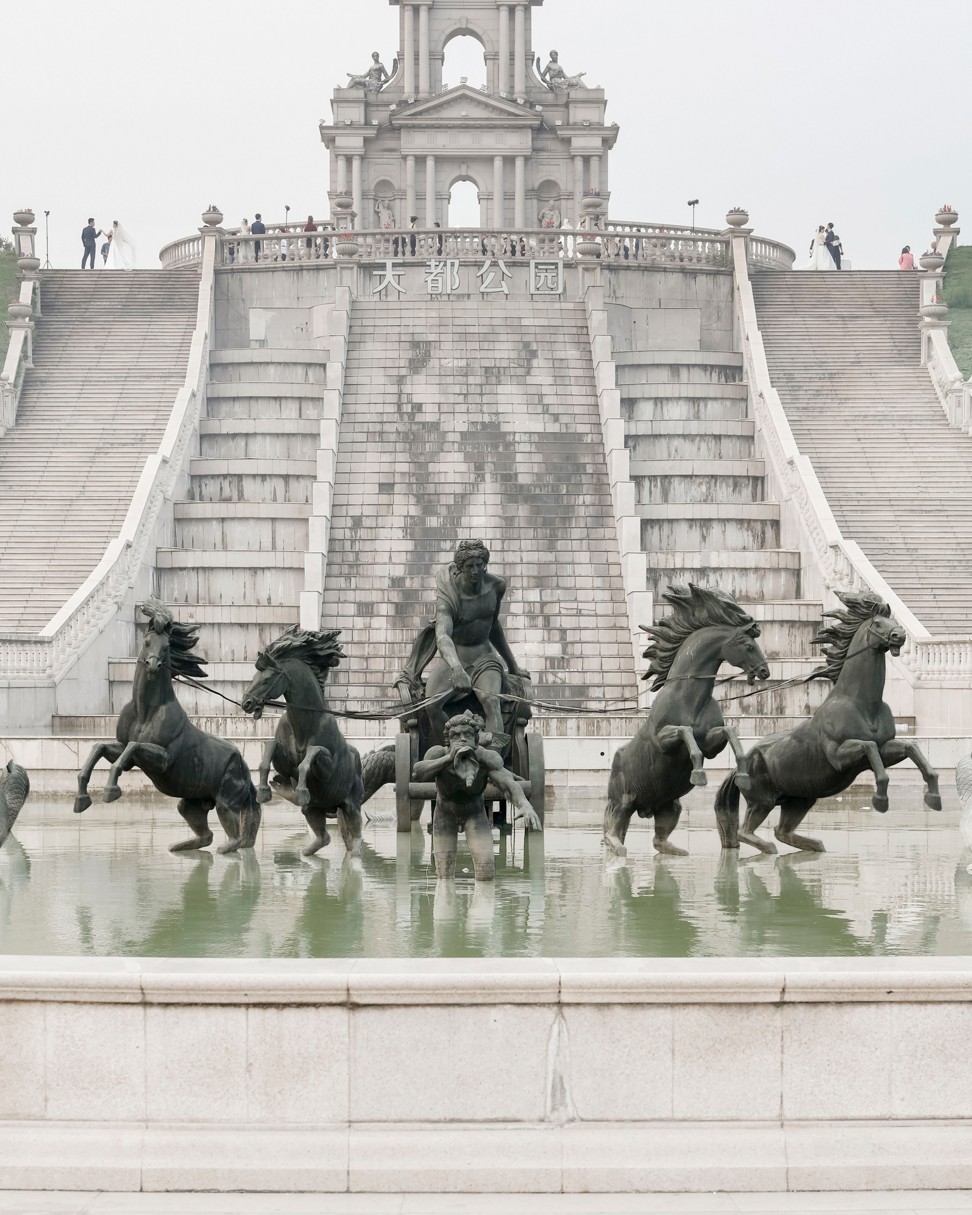
What fascinated the photographer most was the East-meets-West contrast of French architecture with a Chinese way of life: the typical Parisian, Haussmann-style buildings, built from large stone blocks, contain Chinese stores and restaurants behind their very French facades.
“Most of the residents there belong to the middle class,” he says, “They live à la Chinoise not à la Française, and I don’t think they care about that contradiction.
“This brought me to the conclusion that the character of a place comes down to those who live there – that the architecture is just a shell, and has little influence on a population.”
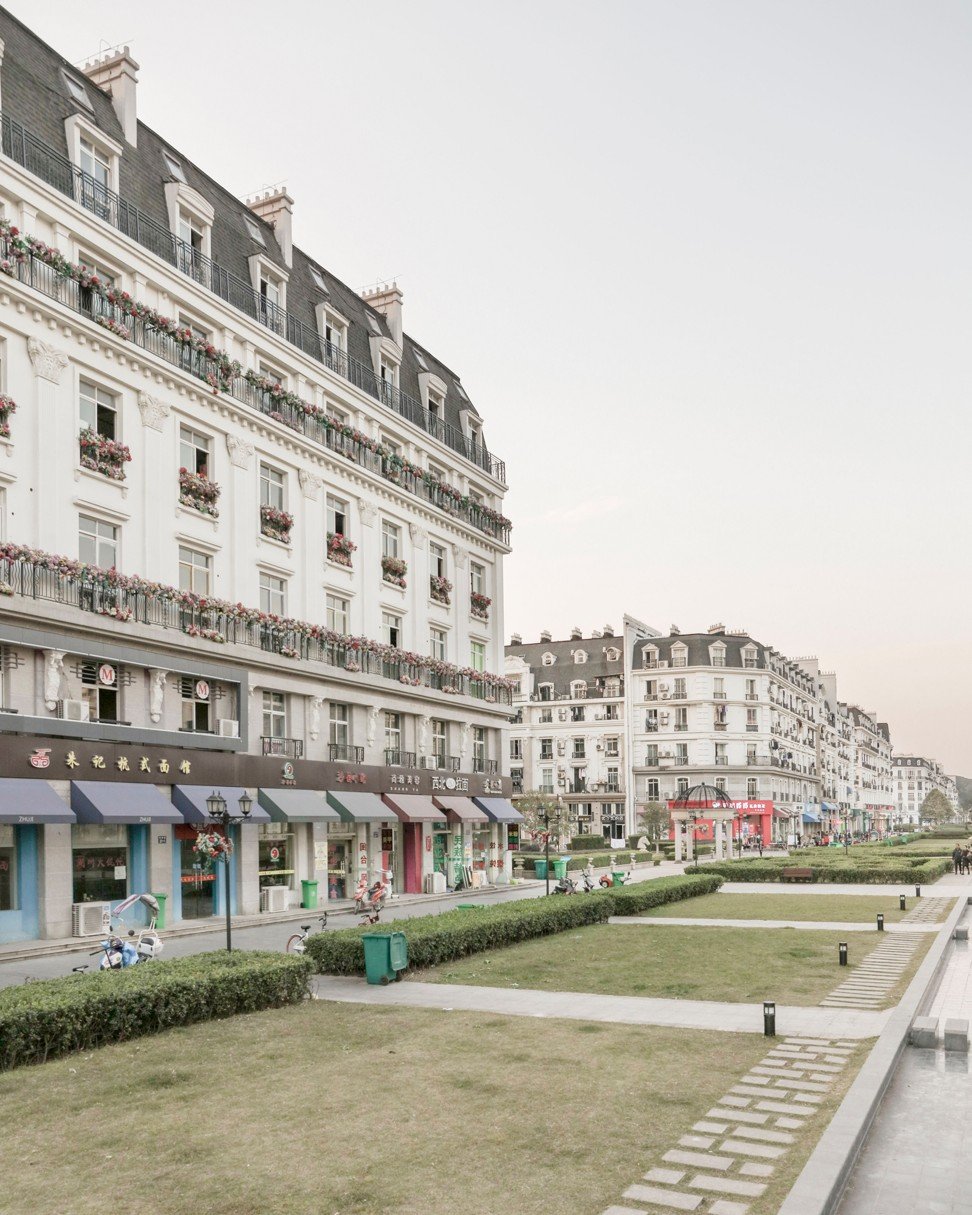
Nevertheless, Prost still feels that Tianducheng’s residents are Paris-proud.
“I have the impression people are proud to live in a recreated Paris, but they have appropriated it as their own. Paris fascinates them aesthetically, but I am not sure that they know anything more about its history or culture. They find living there fun, but nothing more.”
Prost was taken aback with the architectural precision of the Tianducheng project, particularly the effort to replicate the rows of five- and six-storey stone buildings that characterise Paris boulevards.
“They really succeeded to make identical Haussmann buildings, which have quite strict rules about their design and usage,” Prost says.
“The ground floor is always given over to commerce, and shopfronts, the first floor also to retail, or stock. Then after that the next three or four levels are occupied by private residences – flats – topped off by the maid’s room in the rooftop.”
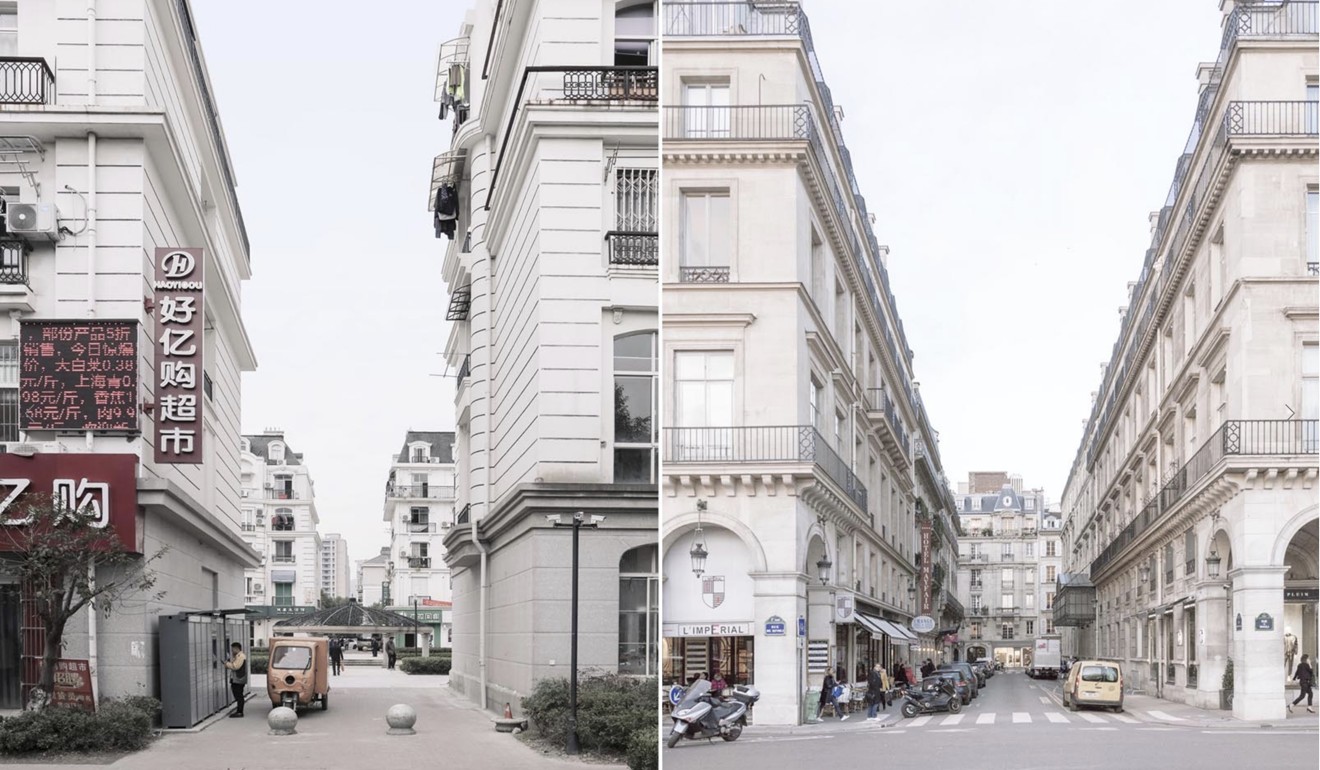
He admits to getting a buzz from showing the odd juxtaposition of Paris-France and Paris-Tianducheng and says many viewers are struck by a sense of disorientation.
“Seeing them side by side is such a strange and singular experience. People often cannot tell which is the original and which is the copy. But it goes further than that. I get an impression that viewers no longer know if they are in China or Paris. They are lost in translation … in a kind of shifting reality. The monuments before them are incredibly similar, yet the context is totally different. I exaggerated the similarities in the way I selected and cut images, to highlight that bizarre contrast.”
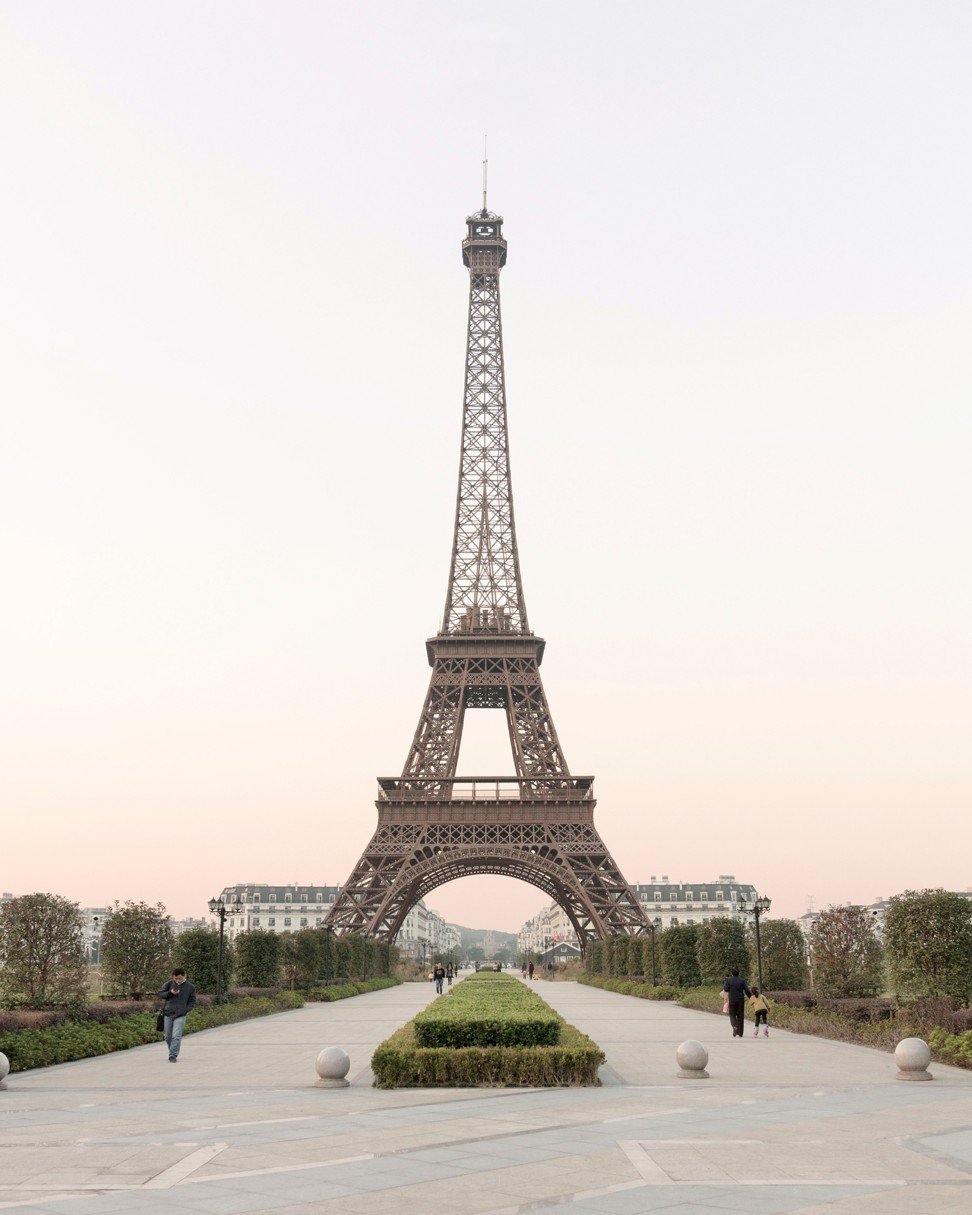
Tianducheng is often portrayed in the media as a flop: a failed “knock-off Paris”, a ghost town; and in architectural circles, a place of urban nothingness. But Prost feels Hangzhou’s mock Paris has much more life than many credit it with.
“A phantom city is not at all the feeling I got,” he says. “It is actually quite animated and lived in. OK, there are no bars, no brasseries, no nightlife as in a real Paris neighbourhood, but until nightfall there is plenty of activity, with people going shopping and doing tai chi in the streets like any other Chinese town.
“Since 2014, the population has more than tripled to 30,000. They even have a problem lodging people. It has become quite expensive,” he says.
The fact that there is not a single French shop or restaurant in sight makes it more authentic, Prost says.
“It’s a living city, a far cry from a Las Vegas facsimile style world, where everything would be chocolate-box French.”
Some of Prost’s images show the paved pedestrian areas around the Haussmann buildings of Tianducheng buzzing with life – passing motorcycles, readers on park benches, and people bustling around the boutiques, markets stalls, and food and beverage outlets. The neat and tidy streets, and flats complete with flower boxes, point to a house-proud community.
“You could so easily be in Paris,” says Prost, “with the identical geometrical landscaping, the marble statues, the decorative details, even the way residents sit on the steps and stroll around the gardens.”